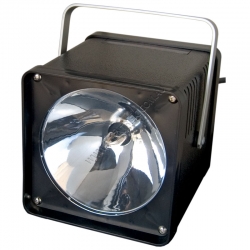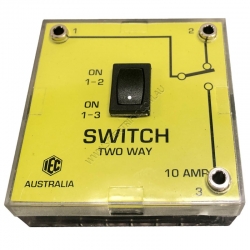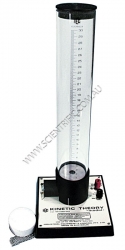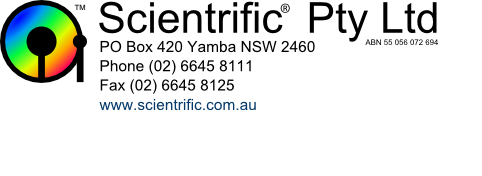184 results found for 'Motion'. Prev |1|2|3|4|5|6|7|8 | Next | View 100 per page
Low relevance matches: 34 other results may be of interest to you. Show low relevance matches
Forces and Moving - The way objects move depends on a variety of factors including their size and shape ACSSU117 Year 7 Physical Sciences
Forces and Machines - Change to an object’s motion is caused by unbalanced forces, including Earth’s gravitational attraction, acting on the object ACSSU151 Year 8 Chemical Sciences
Matter and Particles - The properties of the different states of matter can be explained in terms of the motion and arrangement of particles ACSSU229 Year 10 Physical Sciences
Forces and Motion - The motion of objects can be described and predicted using the laws of physics ACSPH060 Year 11 Linear Motion and Waves
Linear motion and force - Uniformly accelerated motion is described in terms of relationships between measurable scalar and vector quantities, including displacement, speed, velocity and acceleration ACSPH061 Year 11 Linear Motion and Waves
Linear motion and force - Representations, including graphs and vectors, and/or equations of motion, can be used qualitatively and quantitatively to describe and predict linear motion ACSPH062 Year 11 Linear Motion and Waves
Linear motion and force - Vertical motion is analysed by assuming the acceleration due to gravity is constant near Earth’s surface ACSPH063 Year 11 Linear Motion and Waves
Linear motion and force - Newton’s Three Laws of Motion describe the relationship between the force or forces acting on an object, modelled as a point mass, and the motion of the object due to the application of the force or forces ACSPH064 Year 11 Linear Motion and Waves
Linear motion and force - Momentum is a property of moving objects; it is conserved in a closed system and may be transferred from one object to another when a force acts over a time interval ACSPH065 Year 11 Linear Motion and Waves
Linear motion and force - Energy is conserved in isolated systems and is transferred from one object to another when a force is applied over a distance; this causes work to be done and changes to kinetic and/or potential energy of objects ACSPH066 Year 11 Linear Motion and Waves
Linear motion and force - Collisions may be elastic and inelastic; kinetic energy is conserved in elastic collisions ACSPH069 Year 11 Linear Motion and Waves
Waves - Waves may be represented by time and displacement wave diagrams and described in terms of relationships between measurable quantities, including period, amplitude, wavelength, frequency and velocity ACSPH072 Year 11 Linear Motion and Waves
Waves - The superposition of waves in a medium may lead to the formation of standing waves and interference phenomena, including standing waves in pipes and on stretched strings ACSPH073 Year 11 Linear Motion and Waves
Waves - A mechanical system resonates when it is driven at one of its natural frequencies of oscillation; energy is transferred efficiently into systems under these conditions ACSPH076 Year 11 Linear Motion and Waves
Waves - A wave model explains a wide range of lightrelated phenomena including reflection, refraction, total internal reflection, dispersion, diffraction and interference; a transverse wave model is required to explain polarisation ACSPH099 Year 12 Gravity and electromagnetism
Gravity and motion - Projectile motion can be analysed quantitatively by treating the horizontal and vertical components of the motion independently ACSPH100 Year 12 Gravity and electromagnetism
Gravity and motion - When an object experiences a net force of constant magnitude perpendicular to its velocity, it will undergo uniform circular motion, including circular motion on a horizontal plane and around a banked track ACSPH067 Year 11 Linear Motion and Waves
Waves - Waves are periodic oscillations that transfer energy from one point to another ACSPH068 Year 11 Linear Motion and Waves
Waves - Longitudinal and transverse waves are distinguished by the relationship between the direction of oscillation relative to the direction of the wave velocity ACSPH070 Year 11 Linear Motion and Waves
Waves - Mechanical waves transfer energy through a medium; mechanical waves may oscillate the medium or oscillate the pressure within the medium ACSPH071 Year 11 Linear Motion and Waves
Waves - The mechanical wave model can be used to explain phenomena related to reflection and refraction ACSPH074 Year 11 Linear Motion and Waves
Waves - Light exhibits many wave properties; however, it cannot be modelled as a mechanical wave because it can travel through a vacuum ACSPH075 Year 11 Linear Motion and Waves
Waves - A ray model of light may be used to describe reflection, refraction and image formation from lenses and mirrors ACSPH077 Year 11 Linear Motion and Waves
Waves - The speed of light is finite and many orders of magnitude greater than the speed of mechanical waves (for example, sound and water waves); its intensity decreases in an inverse square relationship with distance from a point source ACSPH098 Year 12 Gravity and electromagnetism
Gravity and motion - The vector nature of the gravitational force can be used to analyse motion on inclined planes by considering the components of the gravitational force (that is, weight) parallel and perpendicular to the plane








184 results found for 'Motion'. Prev |1|2|3|4|5|6|7|8 | Next | View 100 per page
Low relevance matches: 34 other results may be of interest to you. Show low relevance matches
Curriculum resources related to 'Motion'
ACSSU005 Foundation Physical SciencesForces and Moving - The way objects move depends on a variety of factors including their size and shape ACSSU117 Year 7 Physical Sciences
Forces and Machines - Change to an object’s motion is caused by unbalanced forces, including Earth’s gravitational attraction, acting on the object ACSSU151 Year 8 Chemical Sciences
Matter and Particles - The properties of the different states of matter can be explained in terms of the motion and arrangement of particles ACSSU229 Year 10 Physical Sciences
Forces and Motion - The motion of objects can be described and predicted using the laws of physics ACSPH060 Year 11 Linear Motion and Waves
Linear motion and force - Uniformly accelerated motion is described in terms of relationships between measurable scalar and vector quantities, including displacement, speed, velocity and acceleration ACSPH061 Year 11 Linear Motion and Waves
Linear motion and force - Representations, including graphs and vectors, and/or equations of motion, can be used qualitatively and quantitatively to describe and predict linear motion ACSPH062 Year 11 Linear Motion and Waves
Linear motion and force - Vertical motion is analysed by assuming the acceleration due to gravity is constant near Earth’s surface ACSPH063 Year 11 Linear Motion and Waves
Linear motion and force - Newton’s Three Laws of Motion describe the relationship between the force or forces acting on an object, modelled as a point mass, and the motion of the object due to the application of the force or forces ACSPH064 Year 11 Linear Motion and Waves
Linear motion and force - Momentum is a property of moving objects; it is conserved in a closed system and may be transferred from one object to another when a force acts over a time interval ACSPH065 Year 11 Linear Motion and Waves
Linear motion and force - Energy is conserved in isolated systems and is transferred from one object to another when a force is applied over a distance; this causes work to be done and changes to kinetic and/or potential energy of objects ACSPH066 Year 11 Linear Motion and Waves
Linear motion and force - Collisions may be elastic and inelastic; kinetic energy is conserved in elastic collisions ACSPH069 Year 11 Linear Motion and Waves
Waves - Waves may be represented by time and displacement wave diagrams and described in terms of relationships between measurable quantities, including period, amplitude, wavelength, frequency and velocity ACSPH072 Year 11 Linear Motion and Waves
Waves - The superposition of waves in a medium may lead to the formation of standing waves and interference phenomena, including standing waves in pipes and on stretched strings ACSPH073 Year 11 Linear Motion and Waves
Waves - A mechanical system resonates when it is driven at one of its natural frequencies of oscillation; energy is transferred efficiently into systems under these conditions ACSPH076 Year 11 Linear Motion and Waves
Waves - A wave model explains a wide range of lightrelated phenomena including reflection, refraction, total internal reflection, dispersion, diffraction and interference; a transverse wave model is required to explain polarisation ACSPH099 Year 12 Gravity and electromagnetism
Gravity and motion - Projectile motion can be analysed quantitatively by treating the horizontal and vertical components of the motion independently ACSPH100 Year 12 Gravity and electromagnetism
Gravity and motion - When an object experiences a net force of constant magnitude perpendicular to its velocity, it will undergo uniform circular motion, including circular motion on a horizontal plane and around a banked track ACSPH067 Year 11 Linear Motion and Waves
Waves - Waves are periodic oscillations that transfer energy from one point to another ACSPH068 Year 11 Linear Motion and Waves
Waves - Longitudinal and transverse waves are distinguished by the relationship between the direction of oscillation relative to the direction of the wave velocity ACSPH070 Year 11 Linear Motion and Waves
Waves - Mechanical waves transfer energy through a medium; mechanical waves may oscillate the medium or oscillate the pressure within the medium ACSPH071 Year 11 Linear Motion and Waves
Waves - The mechanical wave model can be used to explain phenomena related to reflection and refraction ACSPH074 Year 11 Linear Motion and Waves
Waves - Light exhibits many wave properties; however, it cannot be modelled as a mechanical wave because it can travel through a vacuum ACSPH075 Year 11 Linear Motion and Waves
Waves - A ray model of light may be used to describe reflection, refraction and image formation from lenses and mirrors ACSPH077 Year 11 Linear Motion and Waves
Waves - The speed of light is finite and many orders of magnitude greater than the speed of mechanical waves (for example, sound and water waves); its intensity decreases in an inverse square relationship with distance from a point source ACSPH098 Year 12 Gravity and electromagnetism
Gravity and motion - The vector nature of the gravitational force can be used to analyse motion on inclined planes by considering the components of the gravitational force (that is, weight) parallel and perpendicular to the plane
Products related to 'Motion'

IEC Stroboscope Xenon Digital 240V AC XE
IEC DIGITAL XENON STROBOSCOPE MODEL XE 240V AC
The 240V AC IEC XE Xenon Stroboscope has a large 150mm diameter reflector that produces a very bright flash covering a wide area. The flash intensity automatically adjusts to provide the best brightness as the flash rate is c...
Order code: LB3808-001
IEC Stroboscope Xenon Digital
IEC DIGITAL XENON STROBOSCOPE MODEL XEH 240V AC
The 240V AC IEC XEH Xenon Stroboscope has a large 150mm diameter reflector that produces a very bright flash covering a wide area. The flash intensity automatically adjusts to provide the best brightness as the flash rate is...
Order code: LB3809-001

IEC Stroboscope Hand Whirling Fixed Slits
IEC HAND WHIRLING STROBOSCOPE WITH FIXED SLITS
A simple hand whirling stroboscope with twelve fixed slits. Complete with a support rail, viewing slit and a finger hole to spin the 250mm diameter slotted disc.
Order code: LB3850-001
IEC Stroboscope Motorised Mini 4 Slot
IEC MOTORISED VARIABLE SPEED STROBOSCOPE
The IEC Motorised Stroboscope is a strongly engineered, gear driven unit with inbuilt speed control and runs from either AC or DC up to 12V maximum. The gear drive ensures that the electric motor rotates fast to provide a predictab...
Order code: LB3854-001

IEC Kinetic Theory Model Electric
IEC KINETIC THEORY MODEL ELECTRIC 12V DC
The IEC Kinetic Theory apparatus simulates the behaviour of a gas. A strong DC motor is connected to a vibrating rubber faced platform inside an acrylic tube with a scale. A quantity of small stainless steel balls loaded into the t...
Order code: MF1990-001

IEC Kinetic Theory Balls Pack Of 100
IEC KINETIC THEORY BALLS PACK 100
A replacement set of 100 stainless steel balls, for vibrating to simulate gas molecules as supplied with MF1990-001 IEC Kinetic Theory Model.
Order code: PA1990-002

IEC Kinetic Theory Crank & Conductivity Rod
IEC KINETIC THEORY LUBRICATED CRANK AND CON-ROD ASSEMBLY
A replacement lubricated crank and con-rod assembly for the MF1990-001 IEC Kinetic Theory Model.
Order code: PA1990-003

IEC Kinetic Theory Diaphragm Assembly and Linkage
IEC KINETIC THEORY RUBBER FACED DISC & MOUNTING SCREW
A replacement vibrating diaphragm and mounting screw that causes the small stainless steel balls to vibrate as supplied with the MF1990-001 IEC Kinetic Theory Model.
Order code: PA1990-004

IEC Kinetic Theory Foam Float
IEC KINETIC THEORY FOAM FLOAT
A replacement polystyrene foam float with hard surface on one side for balls to react against as supplied with MF1990-001 IEC Kinetic Theory Model.
The float rests over the stainless steel balls and rises up the scale to show the 'pressure' ...
Order code: PA1990-005
IEC Millikans Apparatus Cell Discs Cables
MILLIKAN'S APPARATUS CELL DISCS AND CABLES COMPLETE
A complete Cell set consisting of a top and bottom, the main plastic cell with 2 windows and 2 brass cell discs with cables and plugs for the AP2130-001 IEC Millikans Apparatus.
Order code: PA2130-004
IEC Millikans Apparatus Latex Solution 25ml
IEC MILLIKAN'S APPARATUS LATEX SOLUTION
25ml bottle of Latex Solution stabilised against coagulation for AP2130-001 IEC Millikan's Apparatus.
Order code: PA2130-006
IEC Millikans Apparatus Telescope
IEC MILLIKAN'S APPARATUS TELESCOPE
IEC Millikan's Apparatus telescope is a 20mmD x 160mm multi-lens tubular telescope with graticule, fixed eyepiece and correct focal length to suit the cell centre distance. The whole telescope slides in the holder to find the desired foc...
Order code: PA2130-007
IEC Millikans Apparatus Nebuliser Hose and Needle
IEC MILLIKAN'S APPARATUS NEBULISER, HOSE AND NEEDLE
IEC Millikan's Apparatus nebuliser (atomiser) with latex hose, hypodermic needle and 'puffer'. The nebuliser can be unscrewed and loaded with a few ml of latex solution and connected to the 'puffer' at the bottom and by ...
Order code: PA2130-008

IEC Motor DC Mini 3-6V for Kinetic Theory
IEC KINETIC THEORY MIDI 3-6V DC MOTOR
A replacement 35x50mm high speed 3-6V DC midi size motor for the MF1990-001 IEC Kinetic Theory Model.
Order code: PA2210-002
IEC Motor DC Mini 3V Plain Body without Feet
IEC MOTOR DC MINI 3V WITH PLAIN ROUND BODY NO FEET
A mini size 3V DC motor with plain round body and no feet.
See PA2210-001 for the same motor with a fitted inside moulded housing and feet.
Order code: PA2210-003
IEC Ripple Tank Barriers Set of 4 Aluminium
IEC RIPPLE TANK ALUMINIUM BARRIERS SET OF 4
A set of 4 alloy shapes for the SW3430-001 IEC Ripple Tank to create parabolic and part round 'mirrors' and straight pieces to form slits for experiments in diffraction and reflection.
Order code: PA3430-003
IEC Ripple Tank Wave Generator Ripplers Set of 3 Types
IEC RIPPLE TANK RIPPLERS SET OF 3
A set of 3 different ripple makers for the SW3430-001 IEC Ripple Tank:
• Serrated teeth for multiple point sources
• Straight alloy edge for straight line ripple
• Four small ball end black nylon point source ripplers that can be cl...
Order code: PA3430-004
IEC Ripple Tank Support Bar Stainless Steel for Ripple Maker
IEC RIPPLE TANK STAINLESS STEEL RIPPLER SUPPORT BAR
A stainless steel support bar for the variable speed rippler (not including clamp collars) of the SW3430-001 IEC Ripple Tank.
Order code: PA3430-006
IEC Ripple Tank Instruction Book
IEC RIPPLE TANK INSTRUCTION BOOK
The instruction book for the SW3430-001 IEC Ripple Tank.
Order code: PA3430-007
IEC Ripple Tank Ripple Maker Adjustable Phase 12V Variable
IEC RIPPLE TANK RIPPLE MAKER ADJUSTABLE PHASE 12V VARIABLE
A complete gear driven, adjustable phase, adjustable speed Ripple Generator with integral speed control for the SW3430-001 IEC Ripple Tank.
Powered from any AC or DC power source up to 12V.
Clamps to the stain...
Order code: PA3430-008
IEC Ripple Tank Clamp Screw for Leg with Wing Nut
IEC RIPPLE TANK CLAMP SCREW FOR LEG WITH WING NUT
A clamp screw with wing nut and cupped washer for the leg of the SW3430-001 IEC Ripple Tank.
The stainless steel legs are held to the moulded plastic frame by these aluminium clamp screws. The leg passes through the clam...
Order code: PA3430-010
IEC Ripple Tank Illuminator only Hangs from Frame
IEC RIPPLE TANK ILLUMINATOR ONLY
An illuminator only for the SW3430-001 IEC Ripple Tank. The illuminator hangs by its electrical cable from a stainless steel support frame (PA3430-015 not included). The housing with 12V 25W QI reflector lamp throws light down through the ...
Order code: PA3430-013
IEC Ripple Tank Wave Generator Rippler Pair/Points
IEC RIPPLE TANK WAVE GENERATOR RIPPLER PAIR/POINTS
A set of 4 small, ball end, black nylon point source ripplers for the SW3430-001 IEC Ripple Tank that can be clicked at various points along the straight rail or clicked to the corners of the PA3430-008 variable phase, va...
Order code: PA3430-014
IEC Ripple Tank Support Bar for Illuminator
IEC RIPPLE TANK STAINLESS STEEL SUPPORT BAR FOR ILLUMINATOR
A stainless steel bar to support the PA3430-013 illuminator (not including clamp collars) of the SW3430-001 IEC Ripple Tank.
Order code: PA3430-015
IEC Ripple Tank Support Bar Clamp Collar & Screw
IEC RIPPLE TANK SUPPORT BAR CLAMP COLLAR AND SCREW
A replacement clamp collar and screw for the PA3430-006 stainless steel bar that supports the variable speed rippler of the SW3430-001 IEC Ripple Tank
Order code: PA3430-016
184 results found for 'Motion'. Prev |1|2|3|4|5|6|7|8 | Next | View 100 per page



 ,
,